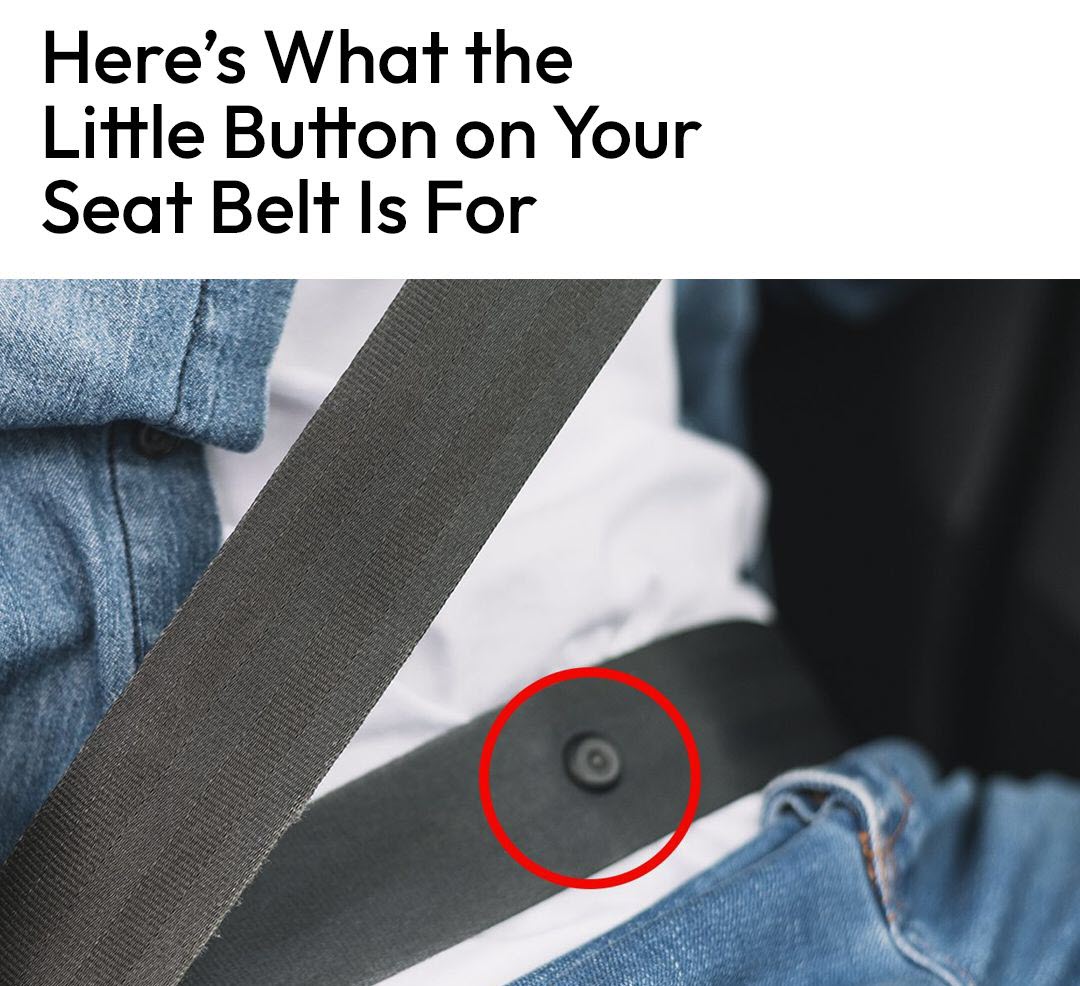When it comes to the intricate details of our vehicles, it’s easy to overlook small features that serve important functions. Modern cars are designed with safety and convenience in mind, and every detail, no matter how minor it seems, has a purpose. One such feature that often goes unnoticed is the small button on the seatbelt strap. If you’ve ever wondered why it’s there, you’re not alone. It may seem insignificant, but this little button plays a crucial role in ensuring your seatbelt is always easy to use.

This component, known as a stop button or retainer button, is far from just a decorative addition. It has a very specific function that enhances both the usability and efficiency of your seatbelt system. While it may not be as obvious as airbags or anti-lock brakes, its role is just as valuable in everyday driving.
The Purpose of the Seatbelt Stop Button
The primary function of the stop button is to keep the latch plate in place when the seatbelt is not in use. The latch plate is the metal piece that clicks into the buckle near your hip. Without the stop button, this piece would slide freely along the belt, making it difficult to reach the next time you need to buckle up.
Imagine unbuckling your seatbelt and watching the latch plate slide all the way down to the floor. Each time you got into the car, you’d have to search for it, reaching down in awkward positions just to find the buckle. This small but mighty button eliminates that hassle, keeping the latch plate within easy reach.
The Role of the Secondary Stop Button
If you take a closer look at your seatbelt, you may also notice a second stop button higher up on the strap. This button has a slightly different but equally important job—it prevents the latch plate from moving too far upward, ensuring it stays in a convenient position.
This second button allows some flexibility for adjustment but prevents excessive shifting. Whether you’re tall, short, or somewhere in between, this thoughtful design ensures that the latch plate remains easy to access regardless of your seat position.
A Small Feature with a Big Impact
Although the stop button is one of the smallest components of your vehicle, it plays a big role in enhancing safety and convenience. It ensures that every time you reach for your seatbelt, the latch plate is exactly where you expect it to be.
Beyond just being a time-saver, it also contributes to driver and passenger safety. In a situation where every second counts—such as an emergency or a sudden need to fasten your seatbelt quickly—the last thing you want is to waste time searching for the latch plate.
What Happens When the Stop Button Breaks?
Like many parts of a car, the stop button isn’t immune to wear and tear. Over time, it can wear out or break, especially if subjected to frequent pulling, excessive force, or accidental damage.
If your stop button breaks, you’ll likely notice that your latch plate keeps sliding down, making it a hassle every time you need to buckle up. The good news is that fixing a broken stop button is simple and inexpensive.
How to Replace a Broken Stop Button
You don’t need a mechanic to fix a missing or broken stop button. Replacement stop button kits are widely available online and at auto parts stores. These kits come with everything you need to install a new button, restoring your seatbelt’s convenience.
The replacement process is straightforward and requires minimal tools. Here’s how to do it:
- Purchase a stop button repair kit – Available at most auto stores or online.
- Identify the correct position – Check where your old button was located or choose a convenient spot.
- Press the two halves together – Most kits include two plastic button halves that snap into place on either side of the belt.
- Ensure it’s secure – Once the button is installed, gently tug on it to confirm it’s properly locked in place.
This quick and easy fix ensures your seatbelt functions as intended, keeping your latch plate from slipping out of reach.
How to Prevent Your Stop Button from Breaking
If you want to avoid dealing with a broken stop button, a little preventive care can help. Here are some tips:
- Avoid excessive pulling or twisting of the stop button when adjusting your seatbelt.
- Check your seatbelt periodically for signs of wear and tear.
- Keep your seatbelt clean to prevent dirt buildup, which can weaken the material over time.
By following these simple steps, you can extend the lifespan of your seatbelt and its components, ensuring they remain in good condition for years.
The Engineering Behind Small but Important Features
The stop button is a perfect example of how car manufacturers think through even the smallest details. It’s a feature that most people don’t notice, but once it’s missing, its absence becomes frustratingly clear.
Modern vehicles are filled with these small but impactful design elements, all aimed at improving the driving experience. From seat adjustments to dashboard layouts, everything is intentionally placed to maximize comfort, safety, and convenience.
While the stop button may not be the most talked-about feature in automotive design, it’s a prime example of smart engineering—a small addition that makes a huge difference in everyday use.
Next Time You Buckle Up, Appreciate This Tiny Feature
Now that you understand the purpose of that small button on your seatbelt, you might find yourself appreciating it more than ever. It prevents frustration, ensures quick accessibility, and helps keep your driving experience smooth and hassle-free.
And if it ever happens to break, you now know that a quick and inexpensive fix is just a few steps away. It’s just another way that car manufacturers design vehicles to make your life easier and safer.
So the next time you buckle up, take a moment to acknowledge this tiny but essential feature—because sometimes, the smallest details make the biggest difference.





